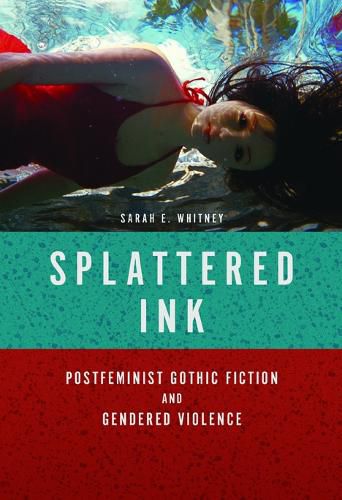Readings Newsletter
Become a Readings Member to make your shopping experience even easier.
Sign in or sign up for free!
You’re not far away from qualifying for FREE standard shipping within Australia
You’ve qualified for FREE standard shipping within Australia
The cart is loading…






In-depth and refreshingly readable, Splattered Ink is a bold analysis of postfeminist gothic, a literary genre that continues to jar readers, reject happy endings, and find powerful new ways to talk about violence against women. Sarah E. Whitney explores the genre’s challenge to postfeminist assumptions of women’s equality and empowerment. The authors she examines–Patricia Cornwell, Jodi Picoult, Susanna Moore, Sapphire, and Alice Sebold–construct narratives around socially invisible and physically broken protagonists who directly experience consequences of women’s ongoing disempowerment. Their works ask readers to inhabit women’s suffering and to face the uncomfortable, all-too-denied fact that today’s women must navigate lives fraught with risk. Whitney’s analysis places the authors within a female gothic tradition that has long given voice to women’s fears of their own powerlessness. But she also reveals the paradox that allows the genre to powerfully critique postfeminism’s often sunshiney outlook while uneasily coexisting within the same universe.
$9.00 standard shipping within Australia
FREE standard shipping within Australia for orders over $100.00
Express & International shipping calculated at checkout
In-depth and refreshingly readable, Splattered Ink is a bold analysis of postfeminist gothic, a literary genre that continues to jar readers, reject happy endings, and find powerful new ways to talk about violence against women. Sarah E. Whitney explores the genre’s challenge to postfeminist assumptions of women’s equality and empowerment. The authors she examines–Patricia Cornwell, Jodi Picoult, Susanna Moore, Sapphire, and Alice Sebold–construct narratives around socially invisible and physically broken protagonists who directly experience consequences of women’s ongoing disempowerment. Their works ask readers to inhabit women’s suffering and to face the uncomfortable, all-too-denied fact that today’s women must navigate lives fraught with risk. Whitney’s analysis places the authors within a female gothic tradition that has long given voice to women’s fears of their own powerlessness. But she also reveals the paradox that allows the genre to powerfully critique postfeminism’s often sunshiney outlook while uneasily coexisting within the same universe.